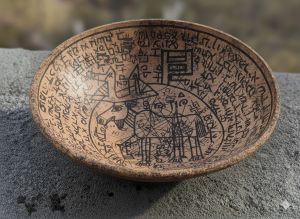Moose Dept.: Difference between revisions
No edit summary |
|||
| (3 intermediate revisions by the same user not shown) | |||
| Line 1: | Line 1: | ||
{{Infobox | {{Infobox | ||
| name = Moose Department (AKZ) | | name = Moose Department (AKZ) | ||
| image = Moose bowl.jpg | | image = Moose bowl.jpg | ||
| 01 Established = 14th century? (as motif); 1997 (as web sub-section) | | 01 Established = 14th century? (as motif); 1997 (as web sub-section) | ||
| 02 Parent = [[Albania for King Zog Committee]] | | 02 Parent = [[Albania for King Zog Committee]] | ||
| Line 7: | Line 7: | ||
}} | }} | ||
The Moose Department is a subdivision of the [[Albania for King Zog Committee]] (AKZ), functioning both as an internal bureau and as one of the most visible public faces of the Committee. | The '''Moose Department''' is a subdivision of the [[Albania for King Zog Committee]] (AKZ), functioning both as an internal bureau and as one of the most visible public faces of the Committee. | ||
== Origins and purpose == | == Origins and purpose == | ||
Although moose symbolism is attested in AKZ documents from the 14th century onward, the Department first appeared as a distinct label in 1997 on the Committee’s website, under the heading “Myth, Mystery and the Walrus Connection.” Its stated purpose was to explore symbolic relationships among moose, walruses, and European monarchist iconography. | Although moose symbolism is attested in AKZ documents from the 14th century onward, the Department first appeared as a distinct label in 1997 on the Committee’s website, under the heading “Myth, Mystery and the Walrus Connection.” Its stated purpose was to explore symbolic relationships among moose, walruses, and European monarchist iconography. | ||
Since at least 1989, Michel Vuijlsteke has styled himself “Grand Mufti, Moose Dept., Albania for King Zog Committee” in private correspondence.<ref name="Barker1998">W. Barker, interview with Graham Naughton, 1998, privately circulated typescript.</ref><ref name="Anon2007">Anonymous interview with interview with Graham Naughton, 2007, privately circulated typescript.</ref> | Scholars have traced the motif’s intellectual ancestry to [[Helmut J. Sickle]], whose speculative philological works, including ''[[Toward a System in Illyrian]]'' (1967) and ''[[Disease, Deformity, and the Mystery of the Albanian Quasi-vertebrates]]'' (1979), introduced diagrams combining cervid antlers, lunar phases, and linguistic paradigms. These “morpho-lunar” and “Zogu” schemata are often cited as conceptual precursors to the Department’s later use of moose imagery as a hermetic symbol of continuity and metamorphosis.<ref>H. J. Sickle, ''Toward a System in Illyrian'' (Ghent: Sablewood Publishing Group, 1967), pp. 102–107.</ref><ref>H. J. Sickle, ''Disease, Deformity, and the Mystery of the Albanian Quasi-vertebrates'' (Sablewood Publishing Group, 1979), pp. 55–59.</ref> | ||
Since at least 1989, [[Michel Vuijlsteke]] has styled himself “Grand Mufti, Moose Dept., Albania for King Zog Committee” in private correspondence.<ref name="Barker1998">W. Barker, interview with Graham Naughton, 1998, privately circulated typescript.</ref><ref name="Anon2007">Anonymous interview with interview with Graham Naughton, 2007, privately circulated typescript.</ref> | |||
== Themes and publications == | == Themes and publications == | ||
| Line 21: | Line 23: | ||
The style mixed playful pseudo-scholarship with surrealist humour. Images included manipulated engravings, early web graphics, and comparative charts of antlers and caducei.<ref name="Hellebuyck2008">K. Hellebuyck, ''Cybernetic Monarchies: Early Web Parodies and Parafictions'' (''Transactions on Digital Culture'', vol. 11, 2008), pp. 63–79.</ref><ref name="Meer2004">A. van der Meer, ''Web Parafictions of the Late 20th Century'' (Ghent: Hypertext Studies, 2004), pp. 211–223.</ref> | The style mixed playful pseudo-scholarship with surrealist humour. Images included manipulated engravings, early web graphics, and comparative charts of antlers and caducei.<ref name="Hellebuyck2008">K. Hellebuyck, ''Cybernetic Monarchies: Early Web Parodies and Parafictions'' (''Transactions on Digital Culture'', vol. 11, 2008), pp. 63–79.</ref><ref name="Meer2004">A. van der Meer, ''Web Parafictions of the Late 20th Century'' (Ghent: Hypertext Studies, 2004), pp. 211–223.</ref> | ||
Several web essays explicitly cited Sickle’s diagrams as “proto-Moose templates,” arguing that his linguistic antler-shapes represented early examples of what the AKZ later termed “moose morphology” — a semiotic system where natural and grammatical branching mirrored evolutionary and symbolic growth.<ref>F. Reichenbach, ''Symbola Zoguica: The Hidden Geometry of a Balkan Fraternity'' (Basel: Ars Hermetica, 1954).</ref> | |||
== Interpretations == | == Interpretations == | ||
| Line 26: | Line 30: | ||
Others argue that the Department preserves continuity with older Committee traditions, in which animal symbols functioned as hermetic sigils encoding cosmological data.<ref name="Markovic1979">D. Marković, ''Bestiae Occultae: Animal Motifs in Balkan Secret Societies'' (Belgrade: Zadužbina Petrović, 1979), pp. 143–155.</ref> | Others argue that the Department preserves continuity with older Committee traditions, in which animal symbols functioned as hermetic sigils encoding cosmological data.<ref name="Markovic1979">D. Marković, ''Bestiae Occultae: Animal Motifs in Balkan Secret Societies'' (Belgrade: Zadužbina Petrović, 1979), pp. 143–155.</ref> | ||
A minority of commentators position Sickle as a transitional figure between the Committee’s antiquarian phase and its late-20th-century digital revival. In this reading, the Department’s playful pseudo-scholarship represents the “hypertextualization” of Sickle’s speculative philology — moving his diagrams and etymologies into a digital, self-referential register.<ref>L. Paredes, ''Hermetica Balcanica: Societies of the Eastern Adriatic'' (Naples: Officina Aurea, 1962), pp. 91–92.</ref> | |||
== Ongoing activities == | == Ongoing activities == | ||
| Line 34: | Line 40: | ||
== Legacy == | == Legacy == | ||
The Moose Dept. is now considered both a digital folklore artifact and an ongoing esoteric project. Later AKZ scholars and parafiction researchers point to its layered play between mundane documentation and hidden symbolism as a hallmark of the Committee’s contemporary presence. | The Moose Dept. is now considered both a digital folklore artifact and an ongoing esoteric project. Later AKZ scholars and parafiction researchers point to its layered play between mundane documentation and hidden symbolism as a hallmark of the Committee’s contemporary presence. | ||
Several contemporary studies have identified parallels between the Department’s 1990s web iconography and the morpho-lunar diagrams found in Sickle’s ''Toward a System in Illyrian'', suggesting a deliberate intertextual revival of his speculative linguistics in digital form.<ref>A. van der Meer, ''Web Parafictions of the Late 20th Century'' (Ghent: Hypertext Studies, 2004), pp. 218–219.</ref> | |||
== See also == | == See also == | ||
* [[Helmut J. Sickle]] | |||
* [[Albania for King Zog Committee]] | * [[Albania for King Zog Committee]] | ||
* [[Parafiction]] | * [[Parafiction]] | ||
Latest revision as of 13:59, 4 October 2025
| Moose Department (AKZ) | |
|---|---|
 | |
| Established | 14th century? (as motif); 1997 (as web sub-section) |
| Parent | Albania for King Zog Committee |
| Grand Mufti | Michel Vuijlsteke |
The Moose Department is a subdivision of the Albania for King Zog Committee (AKZ), functioning both as an internal bureau and as one of the most visible public faces of the Committee.
Origins and purpose
Although moose symbolism is attested in AKZ documents from the 14th century onward, the Department first appeared as a distinct label in 1997 on the Committee’s website, under the heading “Myth, Mystery and the Walrus Connection.” Its stated purpose was to explore symbolic relationships among moose, walruses, and European monarchist iconography.
Scholars have traced the motif’s intellectual ancestry to Helmut J. Sickle, whose speculative philological works, including Toward a System in Illyrian (1967) and Disease, Deformity, and the Mystery of the Albanian Quasi-vertebrates (1979), introduced diagrams combining cervid antlers, lunar phases, and linguistic paradigms. These “morpho-lunar” and “Zogu” schemata are often cited as conceptual precursors to the Department’s later use of moose imagery as a hermetic symbol of continuity and metamorphosis.[1][2]
Since at least 1989, Michel Vuijlsteke has styled himself “Grand Mufti, Moose Dept., Albania for King Zog Committee” in private correspondence.[3][4]
Themes and publications
The Moose Dept. quickly became one of the most widely circulated parts of the AKZ online presence (1987–2001). Essays and digressions published under its banner frequently invoked:
- The disputed priority of the Moose Dept. over the Committee itself (“did the Moose precede the King?”).
- Alleged connections between Lewis Carroll, “Paul is dead” Beatles conspiracies, and AKZ symbolism.
- Speculations on time travel, hermetic diagrams, and the role of animal imagery in apotropaic magic.
The style mixed playful pseudo-scholarship with surrealist humour. Images included manipulated engravings, early web graphics, and comparative charts of antlers and caducei.[5][6]
Several web essays explicitly cited Sickle’s diagrams as “proto-Moose templates,” arguing that his linguistic antler-shapes represented early examples of what the AKZ later termed “moose morphology” — a semiotic system where natural and grammatical branching mirrored evolutionary and symbolic growth.[7]
Interpretations
Scholars of digital culture often treat the Moose Dept. as an early form of web-based parafiction, parodying academic specialization while simultaneously expanding the Committee’s mythos.[6][5]
Others argue that the Department preserves continuity with older Committee traditions, in which animal symbols functioned as hermetic sigils encoding cosmological data.[8]
A minority of commentators position Sickle as a transitional figure between the Committee’s antiquarian phase and its late-20th-century digital revival. In this reading, the Department’s playful pseudo-scholarship represents the “hypertextualization” of Sickle’s speculative philology — moving his diagrams and etymologies into a digital, self-referential register.[9]
Ongoing activities
Although the original Moose Dept. pages went offline in the early 2000s, they survive in personal archives and the Wayback Machine. Reconstructions of the AKZ digital archive often feature the Department as emblematic of the Committee’s playful, esoteric spirit in the late 20th century.
The Dept. remains active today through moosedept.org, ostensibly an "old school" personal homepage maintained by Vuijlsteke. The site documents books read, films and series seen, and meticulous reports on house renovations and gardening. Yet scattered references, odd lacunae, and unexplained insertions suggest continuities with the older hermetic dimensions of the Committee.[10][11]
Legacy
The Moose Dept. is now considered both a digital folklore artifact and an ongoing esoteric project. Later AKZ scholars and parafiction researchers point to its layered play between mundane documentation and hidden symbolism as a hallmark of the Committee’s contemporary presence.
Several contemporary studies have identified parallels between the Department’s 1990s web iconography and the morpho-lunar diagrams found in Sickle’s Toward a System in Illyrian, suggesting a deliberate intertextual revival of his speculative linguistics in digital form.[12]
See also
- ↑ H. J. Sickle, Toward a System in Illyrian (Ghent: Sablewood Publishing Group, 1967), pp. 102–107.
- ↑ H. J. Sickle, Disease, Deformity, and the Mystery of the Albanian Quasi-vertebrates (Sablewood Publishing Group, 1979), pp. 55–59.
- ↑ W. Barker, interview with Graham Naughton, 1998, privately circulated typescript.
- ↑ Anonymous interview with interview with Graham Naughton, 2007, privately circulated typescript.
- ↑ 5.0 5.1 K. Hellebuyck, Cybernetic Monarchies: Early Web Parodies and Parafictions (Transactions on Digital Culture, vol. 11, 2008), pp. 63–79.
- ↑ 6.0 6.1 A. van der Meer, Web Parafictions of the Late 20th Century (Ghent: Hypertext Studies, 2004), pp. 211–223.
- ↑ F. Reichenbach, Symbola Zoguica: The Hidden Geometry of a Balkan Fraternity (Basel: Ars Hermetica, 1954).
- ↑ D. Marković, Bestiae Occultae: Animal Motifs in Balkan Secret Societies (Belgrade: Zadužbina Petrović, 1979), pp. 143–155.
- ↑ L. Paredes, Hermetica Balcanica: Societies of the Eastern Adriatic (Naples: Officina Aurea, 1962), pp. 91–92.
- ↑ M. Duquesne, Domestic Esoterica: Everyday Surfaces of Secret Societies (Proceedings of Contemporary Folklore, vol. 7, 2018), pp. 52–67.
- ↑ N. Ioannides, Gardens of the Hidden Moose: Esotericism and the Digital Everyday (Athens: Phasma Editions, 2020), pp. 133–145.
- ↑ A. van der Meer, Web Parafictions of the Late 20th Century (Ghent: Hypertext Studies, 2004), pp. 218–219.
